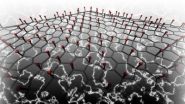(Press-News.org) Distinct patterns of activity—which may indicate a predisposition to care for infants-- appear in the brains of adults who view an image of an infant face—even when the child is not theirs, according to a study by researchers at the National Institutes of Health and in Germany, Italy, and Japan.
Seeing images of infant faces appeared to activate in the adult's brains circuits that reflect preparation for movement and speech as well as feelings of reward.
The findings raise the possibility that studying this activity will yield insights into care giving behavior, but also in cases of child neglect or abuse.
"These adults have no children of their own. Yet images of a baby's face triggered what we think might be a deeply embedded response to reach out and care for that child," said senior author Marc H. Bornstein, Ph.D., head of the Child and Family Research Section of the Eunice Kennedy Shriver National Institute of Child Health and Human Development, the NIH institute that collaborated on the study.
While the researchers recorded participants' brain activity, the participants did not speak or move. Yet their brain activity was typical of patterns preceding such actions as picking up or talking to an infant, the researchers explained. The activity pattern could represent a biological impulse that governs adults' interactions with small children.
From their study results, the researchers concluded that this pattern is specific to seeing human infants. The pattern did not appear when the participants looked at photos of adults or of animals—even baby animals.
Along with Dr. Bornstein, the research was carried out by first author Andrea Caria, Ph.D., of the University of Tuebingen, in Germany; Paola Venuti of the Department of Cognitive Science of University of Trento in Italy; Gianluca Esposito of the RIKEN Brain Science Institute in Saitama, Japan; researchers from the Max Planck Institute for Biological Cybernetics and Eberhard Karls University, in Tuebingen, Germany.
Their findings appear in the journal NeuroImage.
To collect the data, the researchers showed seven men and nine women a series of images while recording their brain activity with a functional magnetic resonance imaging scanner. In the scanner, participants viewed images of puppy and kitten faces, full-grown dogs and cats, human infants and adults.
When the researchers compared the areas and strength of brain activity in response to each kind of image, they found that infant images evoked more activity than any of the other images in brain areas associated with three main functions:
Premotor and preverbal activity - The researchers documented increased activity in the premotor cortex and the supplemental motor area, which are regions of the brain directly under the crown of the head. These regions orchestrate brain impulses preceding speech and movement but before movement takes place.
Facial recognition - Activity in the fusiform gyrus—on each side of the brain, about where the ears are—is associated with processing of information about faces. Activity the researchers detected in the fusiform gyrus may indicate heightened attention to the movement and expressions on an infant's face, the researchers said.
Emotion and reward - Activity deep in the brain areas known as the insula and the cingulate cortex indicated emotional arousal, empathy, attachment and feelings linked to motivation and reward, the researchers said. Other studies have documented a similar pattern of activity in the brains of parents responding to their own infants.
Participants also rated how they felt when viewing adult and infant faces. They reported feeling more willing to approach, smile at, and communicate with an infant than an adult. They also recorded feeling happier when viewing images of infants.
Taken together, the researchers contend, the findings suggest a readiness to interact with infants that previously has been only inferred, and only from parents. Such brain activity in nonparents could indicate that the biological makeup of humans includes a mechanism to ensure that infants survive and receive the care they need to grow and develop.
However, signs of readiness to care for a child that appear in the brains of some or even most adults do not necessarily mean the same patterns will appear in the brains of all adults, Dr. Bornstein said. "It's equally important to investigate what's happening in the brains of those who have neglected or abused children," he said. "Additional studies could help us confirm and understand what appears to be a parenting instinct in adults, both when the instinct functions and when it fails to function."
###
About the Eunice Kennedy Shriver National Institute of Child Health and Human Development (NICHD): The NICHD sponsors research on development, before and after birth; maternal, child, and family health; reproductive biology and population issues; and medical rehabilitation. For more information, visit the Institute's website at http://www.nichd.nih.gov/.
About the National Institutes of Health (NIH): NIH, the nation's medical research agency, includes 27 Institutes and Centers and is a component of the U.S. Department of Health and Human Services. NIH is the primary federal agency conducting and supporting basic, clinical, and translational medical research, and is investigating the causes, treatments, and cures for both common and rare diseases. For more information about NIH and its programs, visit www.nih.gov.
NIH…Turning Discovery into Health
END
In what became known as the 'Scotch tape technique," researchers first extracted graphene with a piece of adhesive in 2004. Graphene is a single layer of carbon atoms arranged in a honeycomb, hexagonal pattern. It looks like chicken wire.
Graphene is a wonder material. It is one-hundred-times better at conducting electricity than silicon. It is stronger than diamond. And, at just one atom thick, it is so thin as to be essentially a two-dimensional material. Such promising physics have made graphene the most studied substance of the last decade, particularly in nanotechnology. ...
The addition of changes in inflammatory biomarkers to established clinical variables improves the prediction of mortality in patients with chronic obstructive pulmonary disease (COPD), according to a new study.
"COPD is characterized by low-grade inflammation, so we hypothesized that the addition of inflammatory biomarkers to established predictive factors would improve the prediction of mortality," said lead author Bartolome Celli, lecturer in medicine at Harvard Medical School and member of the Pulmonary and Critical Care Division of Brigham and Women's Hospital in ...
Copenhagen, 16 March 2012: Stroke survivors who like art have a significantly higher quality of life than those who do not, according to new research. Patients who appreciated music, painting and theatre recovered better from their stroke than patients who did not.
The research was presented at the 12th Annual Spring Meeting on Cardiovascular Nursing, 16-17 March, in Copenhagen, Denmark.
Stroke is the third cause of death in the western world and the first cause of disability in adults. More and more older people are having strokes and undergoing recovery. "We know ...
Copenhagen, 16 March 2012: Depression increases the risk of death in patients who have a coronary stent implanted. After seven years of follow up, depressed patients were 1.5 times more likely to have died than non-depressed patients. The findings were independent of age, gender, clinical characteristics, anxiety and the distressed (Type D) personality.
The research was presented at the 12th Annual Spring Meeting on Cardiovascular Nursing, 16-17 March, in Copenhagen, Denmark.
Depression has been associated with poor outcomes in coronary artery disease but previous ...
Copenhagen, 16 March 2012: Poor dental hygiene behaviours in patients with congenital heart disease are increasing their risk of endocarditis. Teens with congenital heart disease floss, brush and visit the dentist less than their peers. But they have healthier behaviours when it comes to alcohol, cigarettes and illicit drugs. Adults with single ventricle physiology (a type of congenital heart disease) also have poorer dental hygiene practices than their peers despite having better health behaviours overall.
The findings were presented in two studies at the 12th Annual ...
Messier 9, pictured here, is a globular cluster, a roughly spherical swarm of stars that lies around 25 000 light-years from Earth, near the centre of the Milky Way, so close that the gravitational forces from the galactic centre pull it slightly out of shape.
Globular clusters are thought to harbour some of the oldest stars in our galaxy, born when the Universe was just a small fraction of its current age. As well as being far older than the Sun — around twice its age — the stars of Messier 9 also have a markedly different composition, and are enriched with far fewer ...
For the first time, the melting of glaciers in Greenland could now be measured with high accuracy from space. Just in time for the tenth anniversary of the twin satellites GRACE (Gravity Recovery and Climate Experiment) a sharp image has surface, which also renders the spatial distribution of the glacial melt more precisely. The Greenland ice shield had to cope with up to 240 gigatons of mass loss between 2002 and 2011. This corresponds to a sea level rise of about 0.7 mm per year. These statements were made possible by the high-precision measurements of the GRACE mission, ...
Widely used antibiotics may increase incidence and severity of allergic asthma in early life, according to a University of British Columbia study.
The study, published today in the journal EMBO reports, shows that certain antibiotics that affect intestinal bacteria also had a profound impact on allergic asthma.
"It has long been suspected that kids exposed to more antibiotics – like those in developed countries – are more prone to allergic asthma," says the study's author, UBC microbiologist Brett Finlay. "Our study is the first experimental proof that shows how."
Finlay's ...
One of the world's leading Internet security experts, Eugene Kaspersky, has described the World Cyber Security Technology Research Summit at Queen's University Belfast as key in preventing a Cyber World War.
Eugene Kaspersky, CEO and co-founder of the largest antivirus company in Europe, Kaspersky Lab, will be giving a keynote address at the second annual Cyber Security Technology Research Summit on Friday 16 March.
The cyber security guru is joining some of the world's leading cyber security experts and government policy makers from around the world for a two-day meeting ...
PITTSBURGH, March 16 – Researchers at the University of Pittsburgh School of Medicine have identified a cell-signaling pathway that plays a key role in increasing insulin secretion during pregnancy and, when blocked, leads to the development of gestational diabetes. Their findings are available online today in Diabetes, one of the journals of the American Diabetes Association.
During pregnancy, pancreatic beta cells should expand and produce more insulin to adapt to the needs of the growing baby, explained senior investigator Adolfo Garcia-Ocana, Ph.D., associate professor ...

